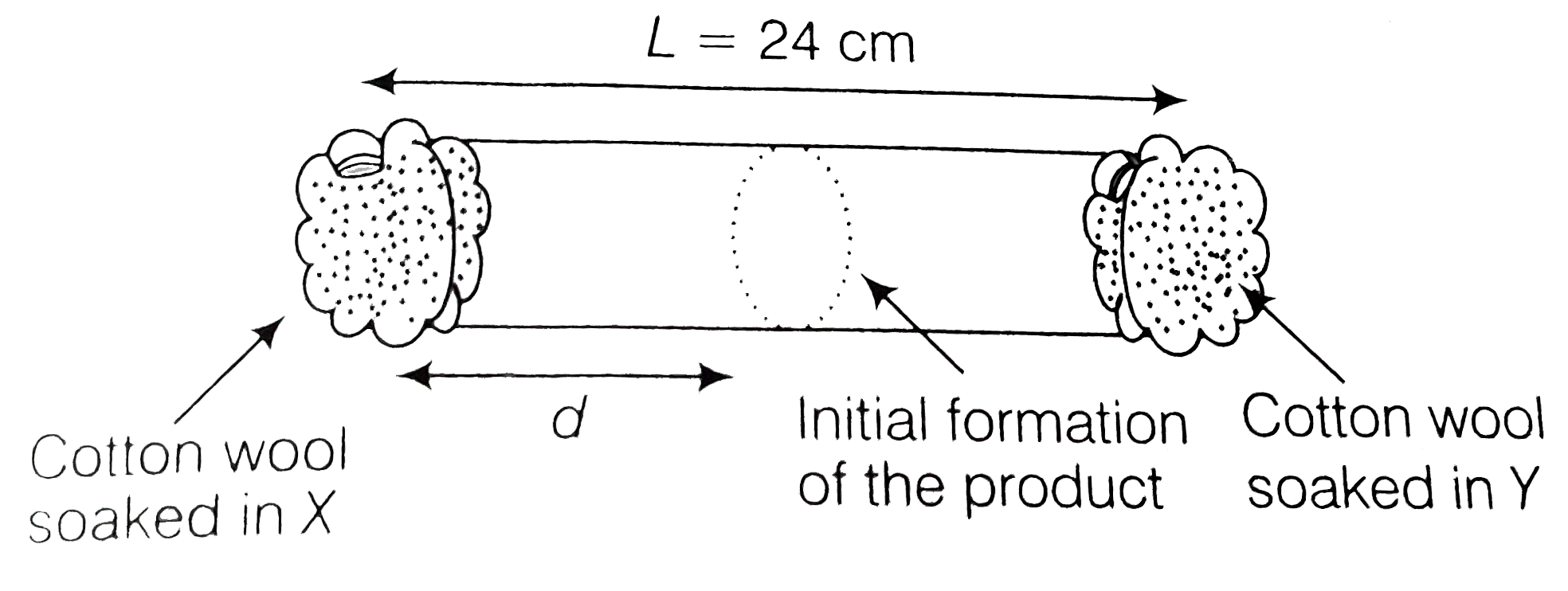Complete Solutions to COMPETITION FILE OBJECTIVE TYPE QUESTIONS (D. MULTIPLE CHOICE QUESTIONS) of chapter STATES OF MATTER : GASES AND LIQUIDS of Class 11 book with complete answers and questions
| Class 11 | CHEMISTRY |
| Chapter | STATES OF MATTER : GASES AND LIQUIDS |
| MODERN PUBLICATION | COMPETITION FILE OBJECTIVE TYPE QUESTIONS (D. MULTIPLE CHOICE QUESTIONS) |
| Number Of Questions | 7 |
| Academic Year | 2023-24 |
The real gases show deviations from ideal gas behaviour. It is observed that real gases donot follow Boyle's law, Charles law and Avogadro law perfectly under all conditions. The deviations from ideal behaviour can be measured in terms of compressiblity factor Z.
what is meant by the term Compressiblity ? (b) What is the value of Compressibility factor for ideal gases and real gases ?
View SolutionReal gases do not follow the ideal gas equation perfectly under all conditions . They show deviation from the ideal behavior when
View SolutionReal gases do not follow the ideal gas equation perfectly under all conditions . They show deviation from the ideal behavior when
View SolutionThe real gases show deviation from ideal gases donot follow Boyle's law, Charles law and Avogadro law perfectly under all conditions. The deviations from ideal behaviour can be measured in terms of compressibility factor, Z which may be defined as :
`Z=(pV)/(nRT)`
It has been observed that Z has values greater than and less than one for different gases. The behaviour of some common gases is shown here.

If `V_(o)` is the observed volume of a gas and `V_(i)` is the ideal gas volume, then Z is
View SolutionThe real gases show deviations from ideal gas behaviour. It is observed that real gases donot follow Boyle's law, Charles law and Avogadro law perfectly under all conditions. The deviations from ideal behaviour can be measured in terms of compressiblity factor Z.
what is meant by the term Compressiblity ? (b) What is the value of Compressibility factor for ideal gases and real gases ?
View Solution`X` and `Y` are two volatile liquids with molar weights of `10gmol^(-1)` and `40gmol^(-1)` respectively. Two cotton plugs, one soaked in `X` and the other soaked in `Y`, are simultaneously placed at the ends of a tube of length `L=24` cm, as shown in the figure.
The tube is filled with an inert gas at 1 atm pressure and a temperature of `300K`. Vapours of `X` and `Y` react to form a product whichh is first observed at a distance `d`cm from the plug soaked in `X`.
Take `X` and `Y` to have equal molecular diameters and assume ideal behaviour for the inert gas and two vapours.

The value of `d` in cm (shown in figure), as estimated from Graham's law, is
View Solution`X` and `Y` are two volatile liquids with molar weights of `10gmol^(-1)` and `40gmol^(-1)` respectively. Two cotton plugs, one soaked in `X` and the other soaked in `Y`, are simultaneously placed at the ends of a tube of length `L=24` cm, as shown in the figure.
The tube is filled with an inert gas at 1 atm pressure and a temperature of `300K`. Vapours of `X` and `Y` react to form a product whichh is first observed at a distance `d`cm from the plug soaked in `X`.
Take `X` and `Y` to have equal molecular diameters and assume ideal behaviour for the inert gas and two vapours.

The experimental value of `d` is found to be smaller than the estimate obtained using Graham's law. This is due to
View Solution
COMPETITION FILE OBJECTIVE TYPE QUESTIONS (D. MULTIPLE CHOICE QUESTIONS) questions and complete solutions for chapter STATES OF MATTER : GASES AND LIQUIDS of MODERN PUBLISHERS CHEMISTRY (HINGLISH) of Class 11
All Exercises from MODERN PUBLICATION Class 11 CHEMISTRY STATES OF MATTER : GASES AND LIQUIDS
- Advanced Level (PROBLEMS)
- COMPETITION FILE OBJECTIVE TYPE QUESTIONS (A. MULTIPLE CHOICE QUESTIONS)
- COMPETITION FILE OBJECTIVE TYPE QUESTIONS (B. MULTIPLE CHOICE QUESTIONS)
- COMPETITION FILE OBJECTIVE TYPE QUESTIONS (B. MULTIPLE CHOICE QUESTIONS)(JEE (ADVANCED) FOR IIT ENTRANCE)
- COMPETITION FILE OBJECTIVE TYPE QUESTIONS (B. MULTIPLE CHOICE QUESTIONS)(JEE (MAIN) & OTHER STATE BOARDS FOR ENGINEERING ENTRANCE)
- COMPETITION FILE OBJECTIVE TYPE QUESTIONS (C. MULTIPLE CHOICE QUESTIONS)
- COMPETITION FILE OBJECTIVE TYPE QUESTIONS (D. MULTIPLE CHOICE QUESTIONS)
- COMPETITION FILE OBJECTIVE TYPE QUESTIONS (D. MULTIPLE CHOICE QUESTIONS)(Integer Type Questions)
- COMPETITION FILE OBJECTIVE TYPE QUESTIONS (D. MULTIPLE CHOICE QUESTIONS)(Matrix Match Type Question)
- Conceptual Questions (1)
- Conceptual Questions (2)
- HIGHER ORDER THINKING SKILLS (ADVANCED LEVEL)
- NCERT FILE (NCERT)(Textbook Exercises)
- NCERT FILE NCERT (EXemplar Problems) (Assertion and Reason Type Questions)
- NCERT FILE NCERT (EXemplar Problems) (Long Answer Questions)
- NCERT FILE NCERT (EXemplar Problems) (Matching Type Question)
- NCERT FILE NCERT (EXemplar Problems) (Multiple Choice Questions (Type-I))
- Practice Problems
- Revision Exercises (Objective Questions)(Assertion Reason Questions)
- Revision Exercises (Objective Questions)(Fill in the blanks Questions)
- Revision Exercises (Objective Questions)(Long Answer Questions)
- Revision Exercises (Objective Questions)(Numerical Problems)
- Revision Exercises (Objective Questions)(Passage Based Questions)
- Revision Exercises (Objective Questions)(Short Answer Questions)
- Revision Exercises (Objective Questions)(True or False Questions)
- Revision Exercises (Objective Questions)(Very Short Answer Questions)
- SOLVED EXAMPLES
- UNIT PRACTICE TEST